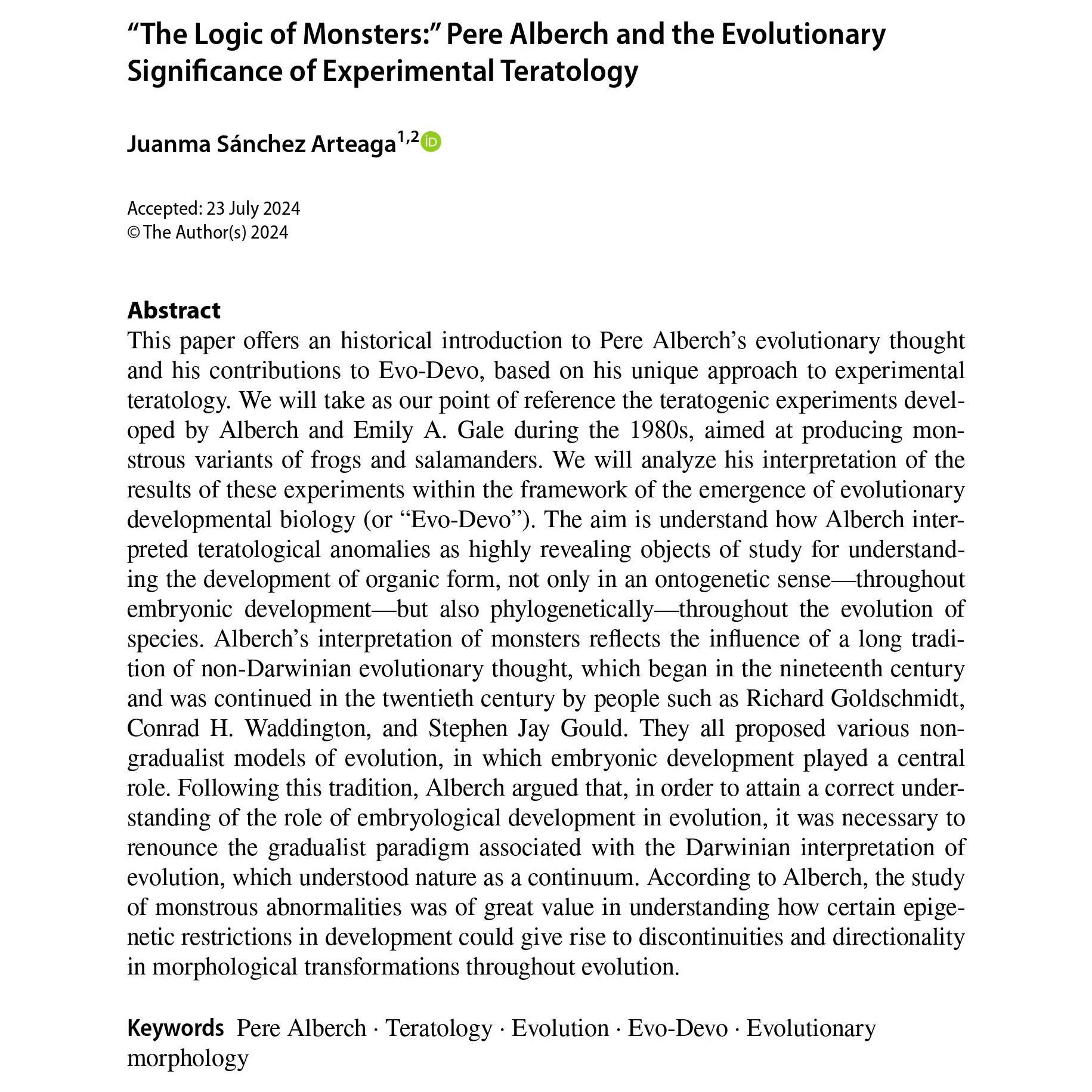“The Logic of Monsters:” Pere Alberch and the Evolutionary Significance of Experimental Teratology
Autor: Juanma Sánchez Arteaga
Abstract: This paper offers an historical introduction to Pere Alberch’s evolutionary thought and his contributions to Evo-Devo, based on his unique approach to experimental teratology. We will take as our point of reference the teratogenic experiments developed by Alberch and Emily A. Gale during the 1980s, aimed at producing monstrous variants of frogs and salamanders. We will analyze his interpretation of the results of these experiments within the framework of the emergence of evolutionary developmental biology (or “Evo-Devo”). The aim is understand how Alberch interpreted teratological anomalies as highly revealing objects of study for understanding the development of organic form, not only in an ontogenetic sense—throughout embryonic development—but also phylogenetically—throughout the evolution of species. Alberch’s interpretation of monsters reflects the influence of a long tradition of non-Darwinian evolutionary thought, which began in the nineteenth century and was continued in the twentieth century by people such as Richard Goldschmidt, Conrad H. Waddington, and Stephen Jay Gould. They all proposed various non-gradualist models of evolution, in which embryonic development played a central role. Following this tradition, Alberch argued that, in order to attain a correct understanding of the role of embryological development in evolution, it was necessary to renounce the gradualist paradigm associated with the Darwinian interpretation of evolution, which understood nature as a continuum. According to Alberch, the study of monstrous abnormalities was of great value in understanding how certain epigenetic restrictions in development could give rise to discontinuities and directionality in morphological transformations throughout evolution.
Keywords: Pere Alberch, Teratology, Evolution, Evo-Devo, Evolutionary morphology.
Periódico: Journal of the History of Biology
Clique AQUI para acessar o artigo na íntegra.


